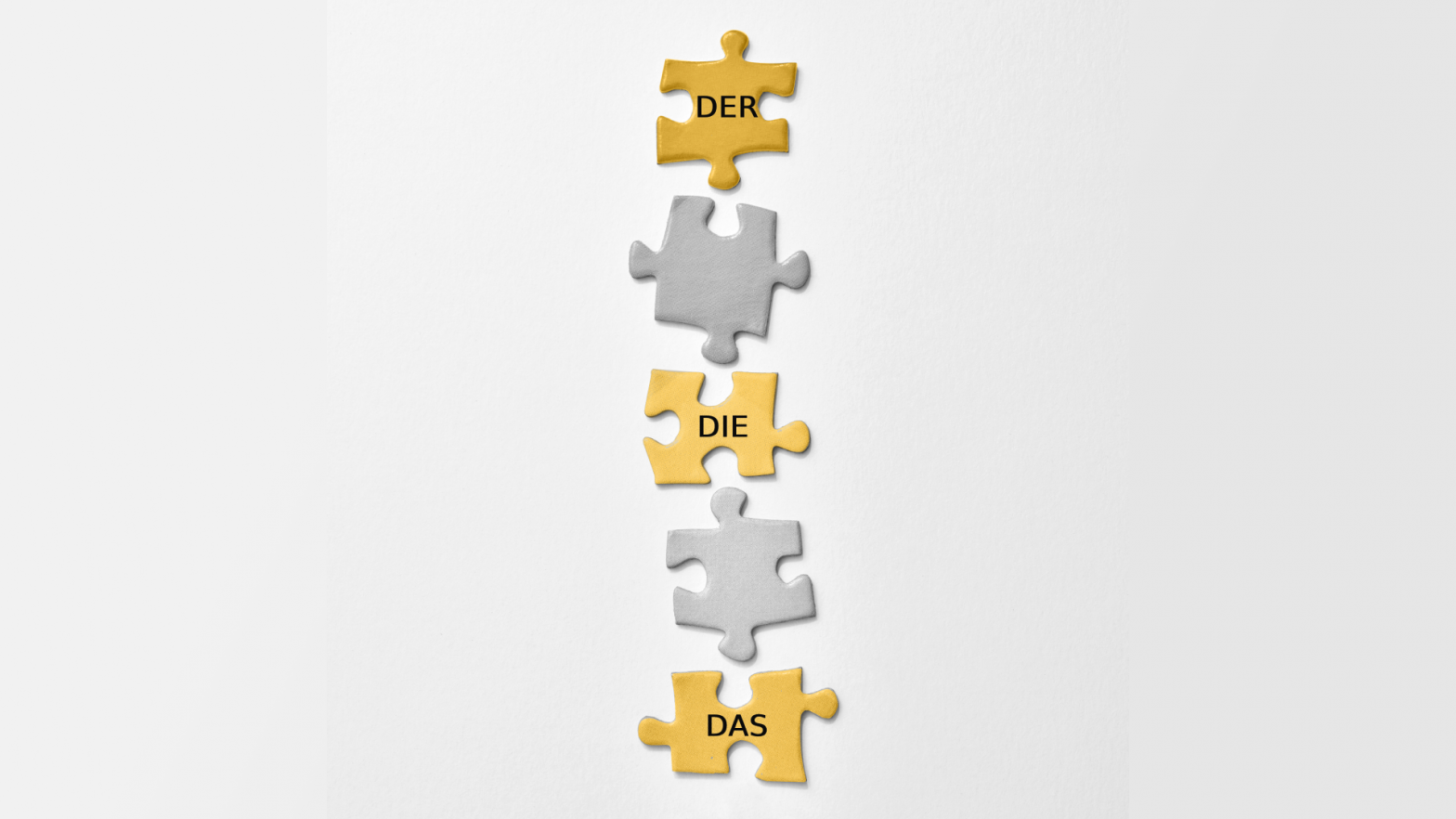German articles were a problematic issue for me for a long time. In middle school, I always got angry when I got lower grades for various written works because I used the wrong article. They seemed unnecessary and too complicated for me to even try to understand them. Little did I know then that in time I would come to love the German language and its grammatical intricacies, including German articles.
When I started studying German philology, I met a great professor who could not stand the errors associated with the articles, so much so that he devoted two lectures to explaining them. I then learned a “secret” that I had never heard of before, which would have made my early days of learning German so much simpler! Thanks to him, even if I don’t know the correct article, I am able to guess it with 99% efficiency. I will share it with you later in this article. Enjoy!
What are articles in German?
The German language is known for the presence of articles. Thanks to them, we can determine the grammatical types of nouns. There are three articles in English grammar, so it shouldn’t be so difficult for English speakers to understand this concept. There is one difference though, and that is the message that the articles convey. German articles let you know the gender and number of a noun. Here they are:
| masculine gender | feminine gender | neuter gender | plural | |
|---|---|---|---|---|
| definite article | der | die | das | die |
| indefinite article | ein | eine | ein | – |
You also need to know that a grammatical article is a concept that functions only within a language. So don’t compare the grammatical genus of nouns in other languages with those in German. The best way to learn the correct article is to memorize each noun right away with its article. Although it is obvious, this is easy to say and harder to do. That’s why, later in this article, I’ll give you some ways to make learning them easier.
Tip: If you don’t know the correct article during the conversation, don’t worry, just say any of them. Remember that the most important thing is communication, not linguistic correctness.
Definite articles: der, die, das
In German, there are three genders: masculine, feminine and neuter. Almost every noun must be preceded by an article, so say der Mann (not Mann) and das Auto (not Auto).
| German | English |
|---|---|
| der | the (masculine gender) |
| die | the (feminine gender) |
| das | the (neuter gender) |
The article is used to denote a noun, but don’t be fooled – it has nothing to do with the actual gender. A great example that illustrates this is das Mädchen (the girl), a word that is of the neuter gender.
Use definite articles when you are talking about specific nouns that have already been mentioned or are known to both you and the listener. The English equivalent for them is “the.” Here are some examples:
| German | English |
|---|---|
| Der Hund bellt. | The dog is barking. |
| Die Blumen sind schön. | The flowers are beautiful. |
| Die Sonne scheint. | The sun is shining. |
At Taalhammer, we conducted a study in which we came to the following conclusion using statistical methods: the German language is predominantly feminine. If you look at all the nouns in the spelling dictionary that are accompanied by only one article, 46% of them require the feminine article die. That’s 12% more than nouns with a masculine article. This is confirmed by the Duden publishing house, which is a reliable authority on all matters related to the German language. So we can conclude that if you don’t know which article to use – choose die. There’s almost a 50% chance you’ll get it right!
Indefinite articles: ein, eine
In German, you can choose between two indefinite generics: ein (for nouns in the masculine and neuter gender) and eine (for nouns in the feminine gender). So it’s much simpler than with definite articles. The English equivalent is either a or an, although this doesn’t convey the information about the gender.
| German | English |
|---|---|
| ein | a/an (masculine and neuter gender) |
| eine | a/an (feminine gender) |
You use them in two cases:
- when you are talking about something that is not clearly defined, e.g. Ich will ein Auto (I want a car) does not mean a specific car, just a car.
- When you mention something for the first time, e.g. Er hat ein Auto. Das Auto ist teuer. (He has a car. The car is expensive.)
| German | English |
|---|---|
| Ich werde eine neue Sprache lernen. | I will learn a new language. |
| Ich möchte eine Pizza essen. | I would like to eat a pizza. |
| Das ist ein guter Freund. Der Freund hat ein Buch. | This is a good friend. The friend has a book. |
Note: indefinite articles occur only in the singular, so never use them in the plural. In this case, plural nouns occur without any article. See the example of the word “books.”
When you mean books in general, you would say Er hat Bücher. If, on the other hand, you’re referring to specific books (such as the ones you just mentioned), you’ll use the definite article, e.g. Er hat die Bücher – just like in English, where you would say books (indefinite) and the books (definite).
| German | English |
|---|---|
| Kauf Äpfel! | Buy apples! |
| Ich möchte Hunde haben. | I want to have dogs. |
| Er hat viele Bücher. | He has a lot of books. |

Zero article
Good news! In some situations, you don’t have to use any article. Then you are dealing with the so-called “zero article.” The zero article occurs:
- before the names of cities and most countries,
- before the names of materials,
- before the names of professions,
- before the names of nationalities,
- before abstract concepts and those specifying feelings,
- if we specify quantity, weight, measure, and after prime numbers,
- after the words viel (a lot), wenig (little) and etwas (a little),
- in some established sayings.
Studying sample sentences will help you remember these rules. I’ve included them in the table below, but you’ll also find them in our app, where, with the help of an advanced repetition system, you’ll learn them in a short time and without too much effort.
| German | English |
|---|---|
| Ich lebe in Deutschland. | I live in Germany. |
| Die Frau ist aus Polen. | This woman is from Poland. |
| Der Pullover ist aus Wolle. | This sweater is woolen. |
| Ich bin Kellner. Ich bin Pole. | I’m a waiter. I’m Polish. |
| Ihr Pullover ist aus Baumwolle und jener Pullover ist aus Wolle. | Her sweater is made of cotton and that one is woolen. |
| Später möchte er Lehrer werden. | Later he wants to become a teacher. |
| Ich habe viel Arbeit in dieser Woche. | I have a lot of work this week. |
| Das Kind möchte etwas Wasser trinken. | This child would like to drink some water. |
| Ich habe heute wenig Zeit für meine Hobbys. | Today I have little time for my hobby. |
| Sein ständiger Ärger beeinflusst seine Gesundheit negativ. | His constant anger affects his health negatively. |
| Ich habe zwei Hunde. | I have two dogs. |
| Ich habe drei Äpfel gekauft. | I bought three apples. |
| Das Paket wiegt fünf Kilogramm. | The package weighs five kilograms. |
| “Kommt Zeit, kommt Rat.” | “Time will tell.” |
Der, die or das? – a proven way to learn the articles
For many learners of German, the articles are a real nightmare, mainly because they convey different information than in English. However, there are a few simple rules that will allow you to recognize which article to use with which noun.
How will the Taalhammer app help you learn articles?
I hope that after reading this article, the articles are no longer a big enigma to you. You have already learned all the theory, so now it’s time to practice! It takes some time and work to “feel the language” and become proficient in using the articles. Take advantage of our German language course to make this task easier. You will find sample study sets and repetitions prepared especially for you. Forget about boring repetition and trust our Spaced Repetition method. It is a very effective way to make the information stick in your long-term memory. See for yourself and crack down on articles once and for all!








